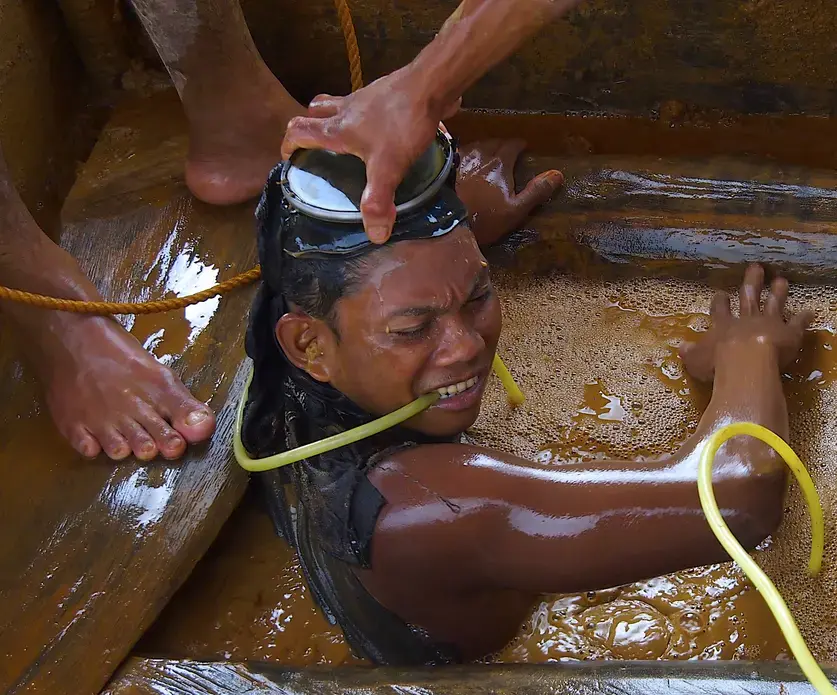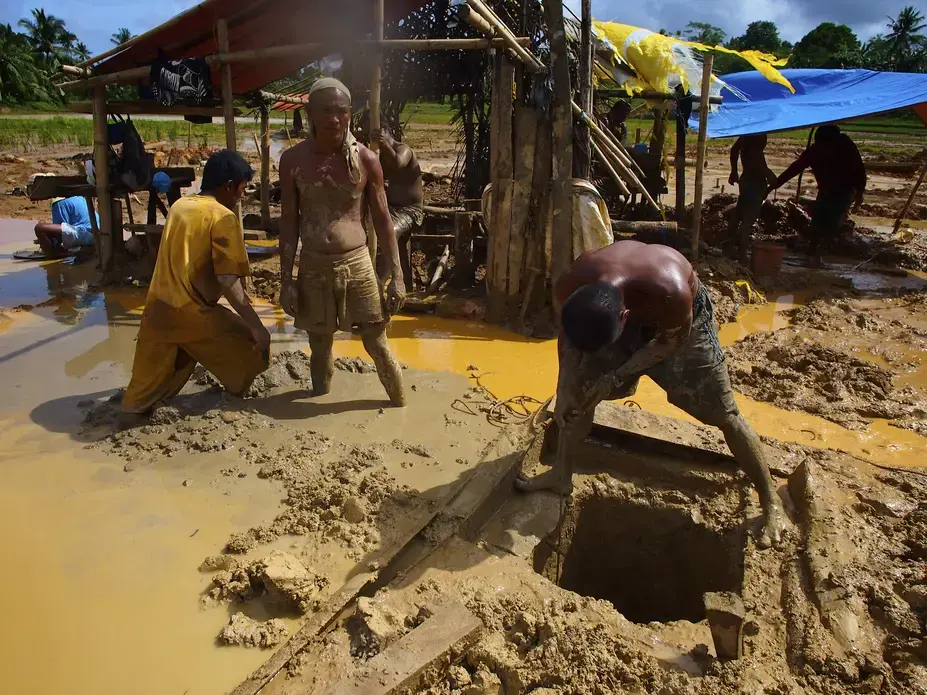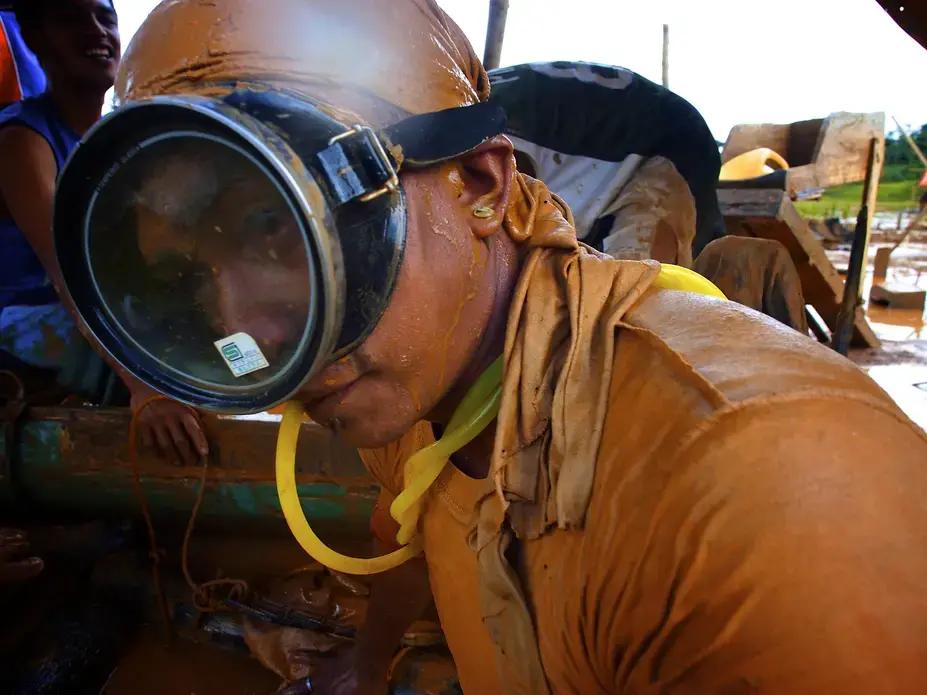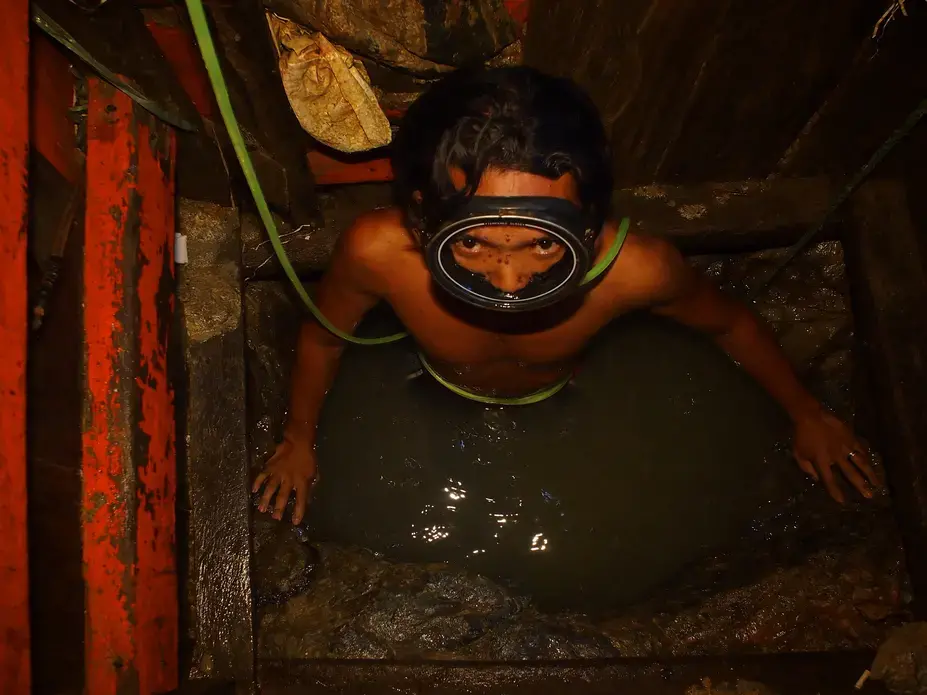The small city of Paracale sits like a jewel on a large cove that gives way to the Philippine Sea to the north. The town has energy, especially compared to the nondescript villages that line the AH26 – the Pan-Philippine Highway – that slices for hundreds of miles though the jungles, hills and shorelines in this part of the Bicol region of the Philippines.
The Paracale River meets the sea here and is itself a highway of sorts. The waterway is choked with small crafts or "bankas," the traditional Philippine canoes stabilized with bamboo outriggers. Bankas move people and goods to and from the town and into the deeper jungle communities upstream.
Strolling the aisles of Paracale Market or walking the busy avenues, I imagined a bustling, prosperous, oceanside community where life is simple and accommodating. I soon realized my naiveté.
There are 43,000 people who live in and around Paracale. The traditional among them have used geography to great advantage. Harvesting the bounty of the ocean, the resources of the forests and the riches of the earth has been a way of life here since the Spanish settled the area in the 16th century.
I arrived at town center after an exhausting 17-hour trip by bus and car from the far northern reaches of Luzon, beyond Manila, and soon began to see the darker, more dangerous side of life here.
The region is unique in the gold mining industry. The forces of nature conspired here to leave unbelievably rich deposits of gold. When I asked about the quality of ore, one local told me all one really has to do is plant a spade in any nearby beach or stream to pull riches from the earth.
It's true the area has an abundant wealth of high-grade ore. But the work of extracting the region's gold – in measurable quantities – is some of the most dangerous in the Philippines.
Because this is a coastal region, much of the clay containing the gold ore is below the water table. This means most mining activity must take place under water. In modern times, successful mining involves cheating the sea with low-tech techniques borrowed from local fishermen.
They call the practice compressor mining. It's the most deadly gold extraction method on earth and is unique to this part of the Philippines. Compressor mining is considered illegal under Philippine law, but the law is largely ignored.
Miners work underwater, breathing through a slender tube attached to a compressor on the surface – hence the name. Fishermen breathed through tubes such as these for generations, but even in relatively shallow waters, the practice is extremely dangerous. Drownings, accidents and carbon monoxide poisoning from faulty compressors are common.
I came to Paracale to see what compressor mining was all about and to see if children were involved.
I was completely unprepared for what I found.
Looking northeast from the main bridge that spans the Paracale River at the center of town, I could see the blue tarps that dot the horizon out toward Longos Point. These are the sunshades over the mining pits. At high tide, the sea covers the shafts. When the water recedes, the miners go to work regardless of the hour.
Compressor mines are simple shafts, perhaps a meter square dug straight down through rock, sand or clay to a depth of 30 or 40 feet. Miners wrap air tubes about themselves in an intricate pattern of loops and knots to secure the tubes on their bodies. Then they clench their teeth around the open ends of the small tubes, breathe deeply and drop below the surface to begin their exhausting work.
Wearing simple swim goggles or masks, they wedge themselves at the bottom of the murky, water-filled pit to scoop the rich, clay-ore into burlap sacks. Above, men tend the compressors and haul up the ore. The miners put their lives in the hands of those on the surface. A faulty compressor gasket, a sudden shift in the clay walls above them or an unexpected change in the ocean currents can mean death. They're used to and even laugh about the danger. To many, this is all they know. They fished this way as young boys. Now the payoff is far greater, so they take the risks. "This is what they do," my interpreter said as an older teenager bobbed in the trash-can-sized hole before disappearing into darkness.
The next day I paid two young boys tending a banka to take me upriver to watch compressor miners work a section of the Paracale River. The young boy cut the engine as we pulled up alongside a five-meter-square structure anchored squarely in the middle of the river. There was only one man in sight but he hardly noticed us. He gazed intensely at bubbles breaking the surface of the cocoa-colored river. I understood now that miners were below dredging the river bottom for the fine silt that had for centuries made its way downstream from the higher ground above the valley. The story was the same. After a while, the miners surfaced, lumbered aboard the rocking platform and grimaced, as the compressor was silenced. The goggles had cut deep ridges in the swollen flesh around their faces and the young men coughed continuously to expel bits of mud and sand from their throats.
As we pushed further into the jungle toward another village where I had heard compressor mining was ongoing, I reflected on the two scenes. At least the dredge work seemed safer than that in the deep pits.
"If I were attempting this and the compressor quit," I thought, "I might be able to kick my way to the surface before I blacked out."
I arrived at Dalas (pronounced "Dallas"), a small town another 15 kilometers in the interior at noon. Dalas is fertile lowland and the surrounding farms produce much of the area's rice. Water buffaloes roam like pets when not toiling in the fields. I wondered how such huge beasts could walk so securely through the mud and muck of the rice fields. "They have big feet," a farmer told me as one giant lumbered by.
We stopped by the edge of a large plain, perhaps 100 acres rimmed with palm trees but devoid of any crop. As I looked out in the distance, I again noticed the random pattern of blue tarps breaking up the flat, orange-mud furrows that were once small rice levees.
These were the compressor mines at Dalas. I had heard that children would be here.
The story was much the same as I spoke with some of the families that lived in the small structures near the field. Most at Dalas make a living by farming rice. With the rise in gold prices in recent years, the temptation to turn their attention to small-scale gold mining has been persistent. A family can earn up to $30 a day mining gold – many times more than they can make farming rice.
But for mining to pay off, entire families must participate. The children become a commodity themselves. Twenty hands in the dirt can make a big difference in the bottom-line income of a poor farming family.
I thought about the water buffaloes as I sunk knee deep in mud. Slowly I made my way to a cluster of compressor mines in the distance. That familiar drone became louder. I saw child after child squatting with gold pans in the streams and riffles of the field. The tiny ones busied themselves by panning the surface clay and saving the fine compound for later processing. Others used rusted spades to shovel mud into troughs used to separate coarser rocks and sand. The older ones worked around the compressor shafts.
I was told the children weren't allowed to enter the compressor mines. That work is considered a skilled endeavor. Here at Dalas and in other regions, only the strongest, bravest and most experienced were allowed to descend to the bottom of the pits.
Watching the young children who were trusted to work around the opening of the pits, I could see that they admired the older teens and young men who risked their lives moment by moment. They gathered around the pits to watch miners emerge and they smiled. I thought they were curious about me and my picture-taking, but then I realized that they were just happy that the young man down in the mine had come up safely.
I saw the faces of the youngest ones and I wondered how many of them would one day take their places in the pits.
Postscript
Shortly after I left the Bicol region, two miners drowned near Paracale under the weight of rushing seawater when the shafts they were working in collapsed. The Philippine government moved to close the mines. I wondered whether the young men I photographed were the ones who died.













